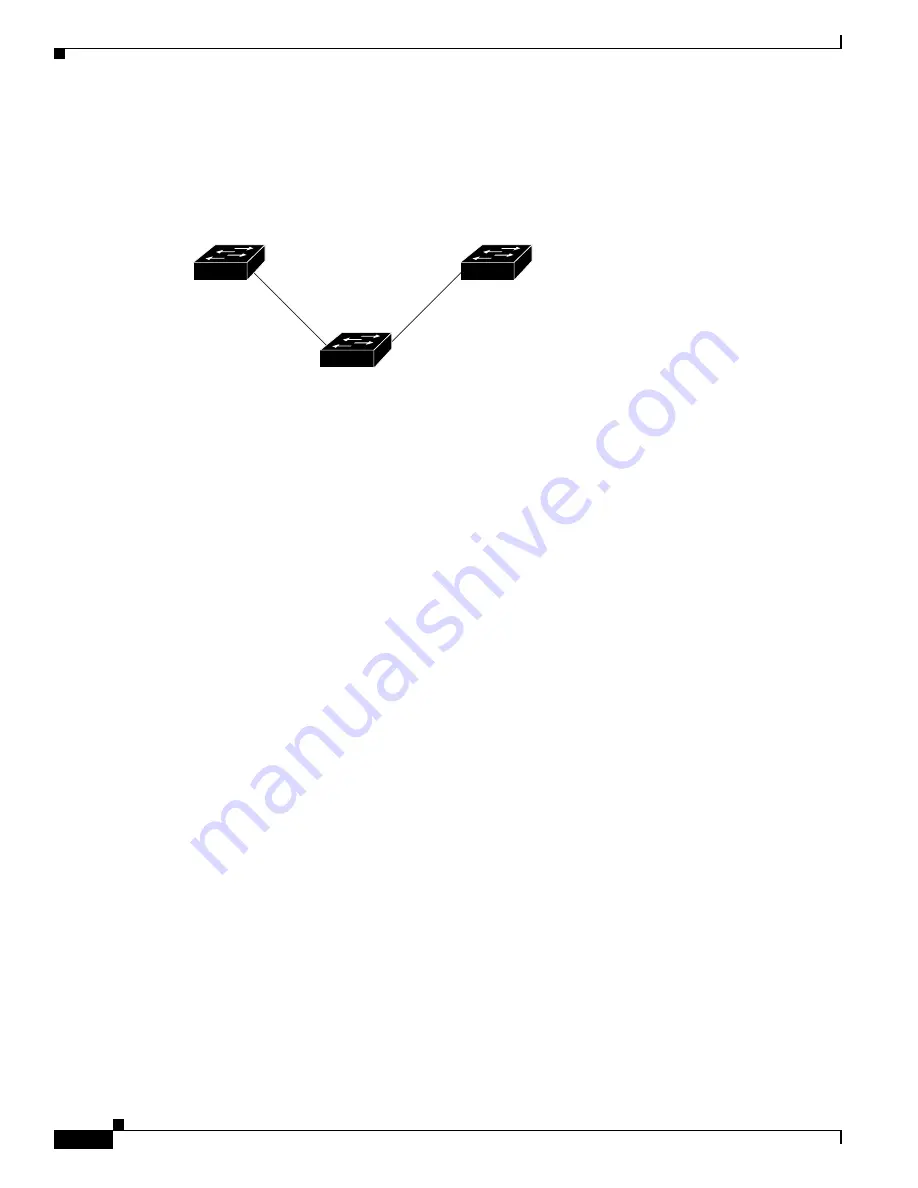
11-2
Cisco 7600 Series Router Cisco IOS Software Configuration Guide, Release 12.2SX
OL-4266-08
Chapter 11 Configuring Flex Links
Configuring Flex Links
between port 2 (the backup link) and router C is not forwarding traffic. If port 1 goes down, port 2 comes
up and starts forwarding traffic to router C. When port 1 comes back up, it goes into standby mode and
does not forward traffic; port 2 continues to forward traffic.
Figure 11-1
Flex Links Configuration Example
If a primary (forwarding) link goes down, a trap notifies the network management stations. If the standby
link goes down, a trap notifies the users.
Flex Links are supported only on Layer 2 ports and port channels, not on VLANs or on Layer 3 ports.
Configuring Flex Links
These sections contain this configuration information:
•
Flex Links Default Configuration, page 11-2
•
Flex Links Configuration Guidelines and Restrictions, page 11-2
•
Configuring Flex Links, page 11-3
Flex Links Default Configuration
There is no default Flex Links configuration.
Flex Links Configuration Guidelines and Restrictions
When configuring Flex Links, follow these guidelines and restrictions:
•
You can configure only one Flex Links backup link for any active link, and it must be a different
interface from the active interface.
•
An interface can belong to only one Flex Links pair. An interface can be a backup link for only one
active link. An active link cannot belong to another Flex Links pair.
•
Neither of the links can be a port that belongs to an EtherChannel. However, you can configure two
port channels (EtherChannel logical interfaces) as Flex Links, and you can configure a port channel
and a physical interface as Flex Links, with either the port channel or the physical interface as the
active link.
A
B
Port 1
Port 2
C
140036
















































